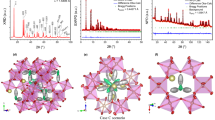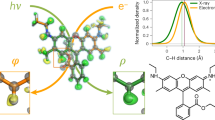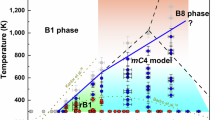Abstract
THE method of Fourier synthesis from observed X-ray reflexion intensities has been widely used as a means of determining interatomic bond-lengths and bond-angles. Alternative methods of deriving accurate atomic co-ordinates from X-ray diffraction data have been suggested by Hughes1 and by Booth2. Their methods are similar in that the co-ordinates are chosen so as to minimize some function of the observed and calculated structure amplitudes, F0 and Fc Hughes, for example, chooses co-ordinates which minimize Σw(F0 — Fc)2. The weighting factors w are introduced to allow for the fact that the F0‘s are not all measurable with the same accuracy. An obvious weakness of the Fourier method is that all F0‘s, including those few likely to be systematically in error because of extinction, etc., are included as coefficients in the Fourier series and must therefore influence the result. The omission of certain coefficients from the series because they cannot be observed experimentally except with radiation of very short wave-length also leads to ’finite summation‚ errors3.
This is a preview of subscription content, access via your institution
Access options
Subscribe to this journal
Receive 51 print issues and online access
$199.00 per year
only $3.90 per issue
Buy this article
- Purchase on SpringerLink
- Instant access to full article PDF
Prices may be subject to local taxes which are calculated during checkout
Similar content being viewed by others
References
Hughes, J. Amer. Chem. Soc., 63, 1737 (1941).
Booth, Nature, 160, 196 (1947).
Booth, Proc. Roy. Soc., A, 188, 77 (1946).
Author information
Authors and Affiliations
Rights and permissions
About this article
Cite this article
COCHRAN, W. The Fourier Method of Crystal Structure Analysis. Nature 161, 765 (1948). https://doi.org/10.1038/161765a0
Published:
Issue date:
DOI: https://doi.org/10.1038/161765a0
This article is cited by
-
A new mathematical approach to finding global solutions of the magnetic structure determination problem
Scientific Reports (2018)
-
Theoretical examination of the relationship between the method of differential synthesis and the method of least squares in precisely specifying the atomic parameters of crystalline structures
Journal of Structural Chemistry (1971)



